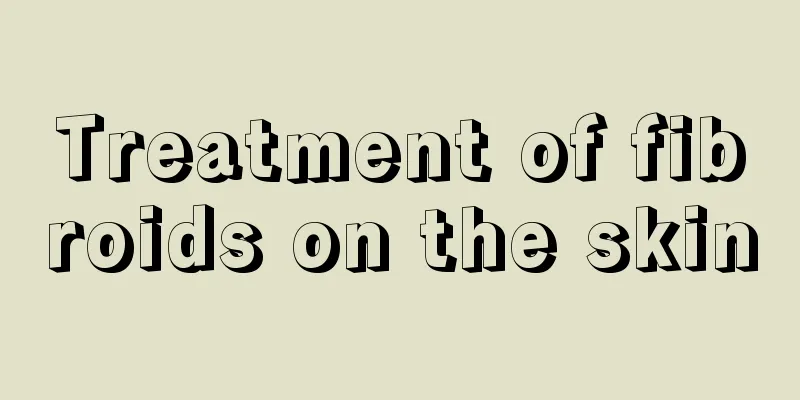These first aid "home remedies" can really kill people

|
Seeking medical help from all sources when you are desperate will not only fail to help, but may also make you an accomplice in harming your loved ones. The Popular Health Network invited authoritative experts to count the first aid remedies that have deceived us for many years, and remind you not to be cheated again. Applying hot compress to a sprained foot - more pain and swelling Wang Chen, chief physician of orthopedics at Zhongda Hospital affiliated to Southeast University: Applying hot compress immediately after spraining your ankle will make the ankle more painful and swollen. It is recommended that the injured person immediately stop ground activities and stabilize the injured area. Cold compresses can be used to suppress bleeding in the first 24 to 48 hours. Topical medications are best used one to two days after the injury. If the injury does not appear to be serious, rest the injured area as much as possible and continue to apply cold compresses for 24 hours until the swelling and pain subside. Seek medical attention if necessary. After 48 hours, you can apply hot compresses. It should be noted that people with sensitive or dull sensory nerves (such as diabetes, stroke patients) and injured people with abnormal blood circulation function should be extra careful when applying ice or hot compresses. If you have open wounds or your skin is particularly sensitive to temperature, avoid applying ice or heat. Slapping the back with a fish bone stuck in the throat, drinking vinegar, swallowing rice balls - suffocation Xue Tao, chief physician of thoracic and cardiovascular surgery at Zhongda Hospital affiliated to Southeast University: If there is a foreign object stuck in the throat and suffocation, difficulty breathing, choking or even respiratory arrest occurs, do not pat the back or put your fingers into the throat to remove it. Not only will this have no effect, it will also push the foreign object deeper into the respiratory tract. However, vinegar cannot stay in the esophagus, so drinking vinegar cannot soften fish bones. Forcing yourself to swallow a rice ball is not only ineffective, but also dangerous, because swallowing a rice ball when a fish bone pierces the throat or esophageal mucosa will only make the fish bone penetrate deeper. The correct way to do it is to place the tongue depressor (chopsticks or toothbrush can be used at home) on the front 2/3 of the tongue, press gently, observe the entire oropharynx, and remove any visible thorns directly with your hands or tweezers. If the person cannot see or speak, he or she should seek medical attention immediately. Nosebleed and head tilted back - pneumonia, suffocation Huang Zhichun, chief physician of the Department of Otolaryngology, Zhongda Hospital Affiliated to Southeast University: Tilt your head back, which is not conducive to stopping bleeding, and can also cause nosebleeds to flow back into the throat, esophagus, trachea and stomach, causing discomfort and nausea. Patients with excessive nosebleeds may also vomit the blood they swallow; Constantly bending over and raising your head will increase nasal bleeding; When the amount of bleeding is large, tilting the head back can easily cause blood to enter the trachea and lungs, causing aspiration pneumonia and even the risk of suffocation. The correct way to do it is: sit down, lean forward slightly, open your mouth and breathe through your mouth; pinch both sides of the nose with your thumb and index finger, and squeeze towards the back of the head for 10 minutes, until there is a slight pain. If bleeding is still going on, move the pinching position slightly until the bleeding stops. If bleeding does not stop, seek medical attention immediately. Apply toothpaste, egg white, or soy sauce to burns and scalds - infection Xiong Meng, director of the Plastic Surgery and Burns Department of Zhongda Hospital affiliated to Southeast University: Applying medication on the wound without authorization will not only have no effect on treating burns and scalds, but sometimes will also cover the wound, making it impossible for doctors to immediately determine the size and depth of the wound. It will not only increase the patient's pain, but also easily lead to bacterial growth and wound infection, so it must be cleaned before rescue. For small to medium-sized shallow burns, cold therapy can reduce further damage to the wound caused by heat, quickly relieve pain, and is simple and easy to perform. The specific method is to rinse the burn and scald wound under the tap or immerse it in clean cold water (the water temperature should be based on the tolerance of the injured, generally 15℃~20℃, and ice cubes can be added to the water in summer), or apply a towel or gauze pad soaked in clean cold water to the wound. However, cold therapy at too low a temperature is also not good for the wound. There is no clear limit on the duration of cold therapy. Generally, it takes about 0.5 to 1 hour or longer for the pain to be significantly relieved after the cold therapy stops. If the situation is serious, go to the hospital for treatment immediately. Bandaging tightly to stop bleeding - necrosis of the extremities Jia Dacheng, a senior first aid expert at the Beijing Emergency Center: If you accidentally cut your finger, most people will tightly bandage the wound with gauze or a Band-Aid. This will hinder blood circulation, which over time will lead to swelling and bruising of the limbs, and in severe cases, necrosis of the limb extremities. Correct approach: Have the person sit or lie down and elevate the injured part; Clean the contaminated wound with clean water, and stop the bleeding first if it is bleeding fast; Cover the wound with sterile gauze or a clean, breathable, non-sticky, absorbent dressing, and apply pressure for 5 to 10 minutes. If the gauze is soaked with blood, it is best not to remove it, but to apply another dressing on top. After the bleeding stops, wrap the wound with a bandage or cloth. You can also use your fingers to press the artery near the wound against the bone to block blood flow. This method is suitable for the limbs, but because it affects blood supply, the time should not exceed 10 minutes. Pinching the Renzhong point in a coma - ineffective and delays treatment Xu Changsheng, attending physician of the Emergency Center of Zhongda Hospital Affiliated to Southeast University: The significance of pinching the Ren Zhong point is to wake people up through painful stimulation. However, there are many causes of coma, such as cerebral infarction, cardiopulmonary disease, hypoglycemia, etc. Pinching the Ren Zhong point is not suitable for all comas. If someone is unconscious and has no pulse, CPR should be performed first. For the elderly, whether they have mastered the correct method and whether they have enough strength are both problems, so the best way is to call 120 immediately. Turning upside down to control water after drowning - secondary death Xu Changsheng, attending physician at the Emergency Center of Zhongda Hospital Affiliated to Southeast University: There are many first aid methods for drowning. Water control and cardiopulmonary resuscitation are two of the more common ones. However, whether to adopt water control or cardiopulmonary resuscitation first mainly depends on whether the drowning person has breathing and heartbeat. After the drowning person is salvaged, first aid personnel can feel the drowning person's pulse and listen to whether he or she is breathing. If the person is still breathing and his heart has not stopped, you should first control the water intake. Otherwise, perform cardiopulmonary resuscitation first. Water control is to place the drowning person on his side, pat his back, and control the water and other debris. Because there will be a vomiting reaction after drowning, this can also prevent vomitus from blocking the trachea and causing suffocation. If the drowning person requires cardiopulmonary resuscitation, perform chest compressions first, then perform artificial respiration while keeping the patient's airway open. The frequency is about 30 chest compressions and 2 artificial respirations. It should be noted that the traditional methods of hanging the drowning person on the back of a cow or on the bottom of a big pot are not recommended. Because for people who drown in fresh water, the water they inhale is mainly in their blood, not much in their stomach. If this method of hanging and lying is used on a drowning person with no heartbeat or breathing, it is likely to delay the best rescue time and cause secondary death. |
<<: Several groups of people with a high risk of liver cancer should be especially careful
Recommend
How long can you live with vomiting due to liver cancer
In the late stage of liver cancer, due to the dec...
How to treat incontinence? This method is the most effective
As people age, they are more likely to suffer fro...
Is lung cancer hereditary? If you want to know the hereditary nature of lung cancer, please read these points
In the past, everyone believed that "lung di...
What should I pay attention to when my intestinal function becomes disordered during menopause
Everyone has to go through menopause, which cause...
What are the side effects of double eyelid cream
Everyone loves beauty. Double eyelid surgery is n...
What are the functions and indications of selenium
Now everyone knows that they need to maintain the...
These 5 early symptoms indicate that you have liver cancer. Don't be stupid and don't know them
In recent years, the incidence of liver cancer ha...
Indications for radiotherapy of nasopharyngeal carcinoma
Radiotherapy for nasopharyngeal carcinoma include...
Why can't I sleep soundly?
Sleep quality is very important for people of all...
Introduction to methods for examining hamartoma
Hamartoma is a benign tumor disease. The main hig...
What disease is caused by tiredness when walking
Everyone has a different physique. Some people ca...
Do I need to wear a swimsuit when taking a hot spring bath?
People nowadays know how to enjoy themselves. Eve...
Can I eat American ginseng if I often have high blood sugar?
If the body's blood sugar level is often too ...
The role of cornstarch
Do you know what cornstarch is? This term is comm...
What is the cause of back pain
Back pain is a common disease, which is more comm...









